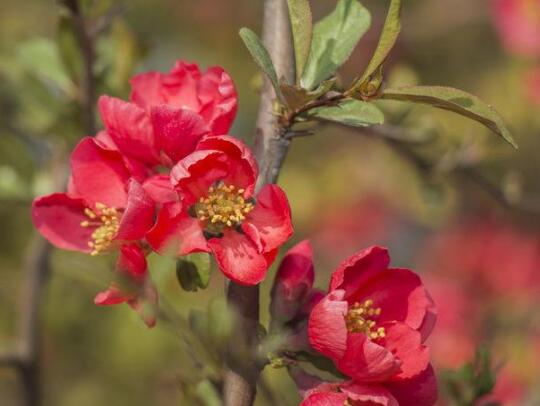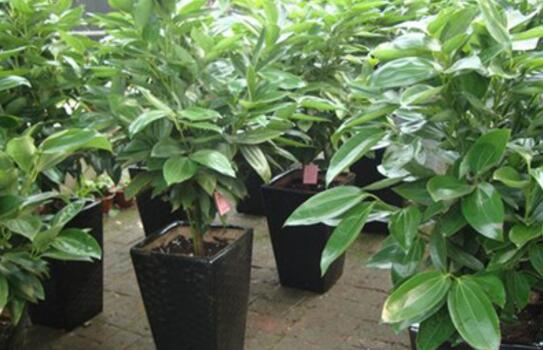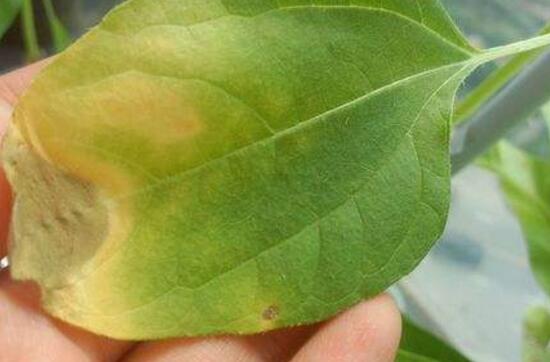How to do the yellow leaves of thorn plum blossoms, the yellow leaves of thorn plum blossoms/control the amount of watering
Rosa przewalskii is a highly ornamental plant, which is planted in many areas of our country. However, if the beautiful flowers turn yellow, it will also affect the sense of beauty. About the thorn plum blossom leaves yellow how to do, what are the reasons for the thorn plum blossom leaves yellowing? Next, the editor will take you to learn about it.
What to do if the leaves of the plum blossom turn yellow / control the amount of water

Second, the reason for the yellowing of the leaves of plum blossoms.
1. Improper fertilization
Fertilizer is one of the main nutrients and an essential part in the cultivation of plum blossoms. However, the amount of fertilization still needs to be controlled, otherwise too much or too little may cause yellowing of leaves. As for how to apply fertilizer, you can refer to the culture method of plum blossom, in which you can find the answer.
two。 Improper watering
Among the causes of leaf yellowing, improper watering is a more common reason, more or less watering will cause the leaves to turn yellow, so we must adhere to the principle of dry watering when watering the plum blossoms.
3. Lack of light
Plum blossom is a kind of light-loving plant, so sunlight is still more important for it. If it is not exposed to the sun for a long time, it will cause the leaves to turn yellow and fall off gradually. So in the process of breeding, it must receive enough light.
4. The environment is not ventilated
In the process of cultivating the plum blossom, it must be cultured in a ventilated environment. If it grows in an unventilated environment for a long time, the plum flower will gradually turn yellow and wither, so the culture environment is still very important.
5. Occurrence of diseases and insect pests
The emergence of diseases and insect pests is also the reason for the yellowing of the leaves of plum blossoms. Of course, this is also a problem that occurs because of improper maintenance at ordinary times. Therefore, we must be careful in the usual maintenance process, as long as the maintenance is good, there will not be such a problem.
Gardenia leaves yellow is what reason _ gardenia leaves yellowing how to do?
Gardenia is a very common flower plant in people's life, and the most attractive thing is the fragrance of its flowers when they are in full bloom, which is why many people like to raise gardenia very much. In the process of breeding gardenia, there will always be some problems, such as gardenia leaves yellowing, gardenia fragrance poisonous and so on. Today, let's take a look at what is the reason why the gardenia leaves are yellow, and how to do the gardenia leaves yellowing? [introduction of Gardenia jasminoides] Gardenia is also known as gardenia, jade lotus, white toad, astragalus and so on. It is a perennial evergreen shrub plant of Rubiaceae. Gardenia is mainly distributed in Sichuan, Jiangxi, Jiangsu, Anhui, Zhejiang, Hunan, Taiwan, Yunnan, Fujian, Guangdong and other places. Its branches and leaves are very luxuriant, and the leaves are evergreen all the year round, and the flowers in full bloom will exude a charming fragrance, which is called an important plant for garden ornamental. Gardenia can not only watch the flowers, but also its fruits, leaves and roots have very good medicinal value, such as detoxification and cooling blood, clearing heat and diuresis, purging fire and eliminating annoyance, and so on. [growth habits of Gardenia jasminoides] Gardenia likes to grow in a sunny, warm and humid environment, its cold resistance is better, it is more resistant to semi-overcast, and is afraid of stagnant water. It is suitable for growing in loose, fertile, well-ventilated acidic sandy soil, avoiding the direct exposure of strong light in the process of breeding, and suitable for growing in a more hidden environment. Gardenia suitable for growth temperature is 16 degrees Celsius, in winter the temperature can not be lower than zero degrees Celsius, otherwise it will be dormant. It is suitable to be used as a potted flower plant in Northeast, Northwest, North China and other areas. It is a very typical acid flower plant. What is the reason for the yellowing of gardenia leaves. Improper watering: gardenia is afraid of stagnant water, too much water during breeding will make the tender leaves dim, the leaves will become yellowish green, and the new leaves will not grow. two。 Improper lighting: in the case of strong light, the leaves of gardenia will appear macula, and the leaves will also appear yellowing. If the gardenia is cultured in a shady place for a long time, the gardenia will get inappropriate light, and the leaves will turn yellow or fall off, so photosynthesis should be carried out in time. 3. Improper fertilization: when cultivating gardenia, the thick and high fertilizer will also cause the plant leaves to be yellowed, generally the top of the new leaves will appear brown, although the leaves are relatively thick but do not have any luster, and can not completely open, the old leaves will appear scorched yellow hanging orchid. Insufficient fertilizer can also cause yellowing or shedding of gardenia leaves. In the case of nitrogen deficiency in gardenia, the leaves will turn yellow, and the new leaves grow very small and brittle. In the case of potassium deficiency, the old leaves will turn brown, thus affecting the ornamental value. In the case of iron deficiency, the leaves will slowly turn yellowish to yellow or white, and eventually wither away. In the case of magnesium deficiency, the old leaves will first turn yellow, then the new leaves will turn yellow, and finally the leaves will wither and fall completely. In the case of phosphorus deficiency, the old leaves will turn fuchsia or dark red. 4. Temperature discomfort: too low temperature can cause yellowing of leaves. Be prepared in winter and mainly keep warm in early spring or early winter. What if the leaves of gardenia turn yellow. If the leaves are yellowed due to excessive watering, you can put the plants in a pot after they are propagated in a ventilated place to dry. The yellowed and withered plants will fall off naturally, and the new leaves will grow more normally and should be watered enough. two。 If the light is too strong to cause the leaves to turn yellow, you can put the gardenia in a more hidden place. And if it is the case of insufficient light, give sufficient light. 3. If the concentration of fertilizer is too high, it can reduce the concentration of soil fertilizer, ferrous sulfate can be used in the case of iron deficiency, and boron and magnesium fertilizer can be used in the case of magnesium. 4. Gardenia should not grow at a temperature below zero degrees Celsius in winter, otherwise the plant will be dormant or freeze to death, so be prepared against freezing.
More information about what pink roses represent, how to raise mosquito repellent grass, how to raise magnolia flowers, how to raise canna.
What is the reason for the yellowing of rich bamboo leaves?
Rich bamboo is one of the most common potted plants in the family, especially the rich bamboo in the water basin, which looks very clean and comfortable and has very good ornamental value. There are many ways to cultivate Fugui bamboo, including hydroponic culture and soil culture. there are also many rich bamboos in its basin, such as Phnom Penh, Silver Bamboo, Golden Bamboo, Silver Heart Bamboo and so on. The leaves of Fugui bamboo are very beautiful and are very popular with people. There can be a lot of yellowing of rich bamboo leaves in the process of human culture. Now let's take a look at the rich bamboo leaves yellowing how to do, and rich bamboo leaves yellow is caused by what reason? [introduction to Fugui Bamboo] Fugui Bamboo is a kind of foliage plant, and its leaves are colorful and very good-looking. Fugui bamboo is called longevity bamboo, open bamboo, rich bamboo tower, bamboo tower and so on. it is a kind of foliage plant belonging to the genus Bambusa of Liliaceae. it is native to Cameroon in western Africa and is a green herb growing for many years. it is mainly used as a potted ornamental plant, its ornamental value is very high, symbolizing good luck, wealth and auspiciousness in it. It is one of the most popular potted plants in China. [growth habits of rich bamboos] the plants of rich bamboos are relatively stout, generally planted in the garden, and there are also wild rich bamboos. It likes to grow in a dark and humid environment, the stems and leaves are relatively thick, and the color of the leaves is dark green, which has a good ornamental value. The stems of Fugui bamboo are very tall and straight, the leaves are dark green, and they are evergreen in winter and summer. The planting time of rich bamboo is the most suitable in spring, which usually begins to harvest plants in December. It likes to grow in loose, fertile soil or fertile water. It can be pot-planted or bottle-inserted stem propagation, can be processed into open transport bamboo, curved bamboo and so on, thus temporarily creating a kind of elegant and soft, chic posture, delicate stems and leaves and other characteristics, the ornamental is very good. The rich output is very high, and the economic benefit is also very good, quite favored by the people. [what is the reason for the yellowing of rich bamboo leaves?] in the process of breeding, the leaves are very easy to yellowing, mainly due to improper cultivation and management. The main reasons are too much water, too little sunlight, too strong and too weak fertilizer. In the process of breeding, the yellowing of leaves is different, we should analyze it, so as to improve it. 1. Water yellow: the newly grown leaves are relatively dark yellow and do not have any luster, but the old leaves do not have any obvious changes, the branches are relatively small, and the new shoots are relatively shrinking, all of which are caused by too much watering. It is necessary to put it in a ventilated and hidden environment to dry, and then sort out the basin soil. two。 Dry yellow: in the rich bamboo lack of water, the leaves will also turn yellow. Its leaf tip and leaf edge will dry and wither, and the old leaves will fall off from the bottom up, but the newly grown young leaves are relatively normal, so it is necessary to pour water thoroughly and give them enough water. 3. Burning yellow: too strong light will cause rich bamboo leaves to turn yellow, leaf tips and leaf edges will wither, and yellow spots will appear on the leaves, which need to be cultured in a more hidden place. 4. Lack of light yellow: if the rich bamboo is cultured in a relatively hidden environment for a long time, the leaves can not absorb enough light, the leaves can not form chlorophyll, and the leaves will turn yellowing, so it is necessary to culture in places with plenty of sun. but avoid the occurrence of direct light. 5. Fat yellow: when cultivating rich bamboo, applying too much or too much fertilizer will cause the leaves to turn yellow. generally, they will appear dry brown at the top of the new leaves. Although the leaves are embarrassed and thick, they do not have any luster. The leaves do not stretch completely, and the old leaves will fall off naturally after yellowing, so stop fertilizing and watering more, thus flushing some nutrients. 6. Lack of fat yellow: in the case of insufficient fertilization, the leaf color of rich bamboo will be relatively light, usually light green or yellow. At this time, you can check the basin soil, you can change the soil in the case of dry soil, apply more thin fertilizer or alum in it, mainly with nitrogen fertilizer as the main fertilizer.
More information about the symbolism of plum blossoms Picture of money Tree Picture of Cigu how to plant Robinia pseudoacacia what is the function of black trigonous planting method
- Prev

How to raise Ping an trees? the breeding methods and precautions / lighting of Ping an trees should be fastidious.
Ping an tree, which originated in Taiwan, is very popular with people because of its unique flower language, so more and more people choose to plant Ping an tree, but many people don't know how to raise it. Today, the editor will bring you detailed methods and points for attention.
- Next

Sunflower leaves yellowing how to do, pay attention to light / fertilization / watering (including solutions)
Sunflower is famous for its large and beautiful flowers, and it is also famous for its tolerance to drought and cold. Although it may be the best to raise among many plants, if you do not know the breeding methods and precautions of sunflowers, there will be a dilemma of yellowing leaves.
Related
- Fuxing push coffee new agricultural production and marketing class: lack of small-scale processing plants
- Jujube rice field leisure farm deep ploughing Yilan for five years to create a space for organic food and play
- Nongyu Farm-A trial of organic papaya for brave women with advanced technology
- Four points for attention in the prevention and control of diseases and insect pests of edible fungi
- How to add nutrient solution to Edible Fungi
- Is there any good way to control edible fungus mites?
- Open Inoculation Technology of Edible Fungi
- Is there any clever way to use fertilizer for edible fungus in winter?
- What agents are used to kill the pathogens of edible fungi in the mushroom shed?
- Rapid drying of Edible Fungi

